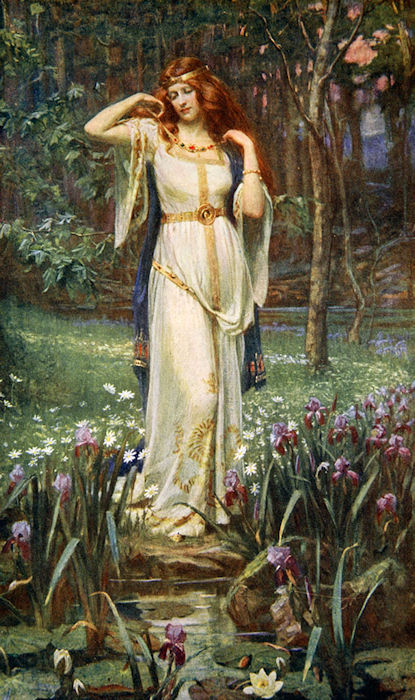Unusual Power Of Seidr: Norse Shamans Used Magic To Alter Destiny And See The Future
Ellen Lloyd - AncientPages.com - In Norse mythology, Seidr is the practice of magic and shamanism.
Shamans played a very important role in Norse society. These enigmatic beings were known for their unusual powers, and they were credited with the ability to alter destiny. Beings who mastered seidr were therefore as much feared as respected by people and even the Norse gods themselves.
Goddess Freya was the most powerful völva. Freya painting by James Doyle Penrose (1862-1932). Credit: Public Domain
Seidr – How Norse Shamanism Was Used
In his book, The Viking Way: Magic and Mind in Late Iron Age Scandinavia, author and archaeologist Neil Price explains how seidr was used in general. "There were seiðr rituals for divination and clairvoyance; for seeking out the hidden, both in the secrets of the mind and in physical locations; for healing the sick; for bringing good luck; for controlling the weather; for calling game animals and fish.
Importantly, it could also be used for the opposite of these things – to curse an individual or an enterprise; to blight the land and make it barren; to induce illness; to tell false futures and thus to set their recipients on the road to disaster; to injure, maim and kill, in domestic disputes and especially in battle."
Archaeological Evidence Shows Ancient Norse Shamans Did Exist
A Völva was a powerful female shaman, and her male counterpart was Vitki.
The practice of Seidr (in Old Norse, seiðr) is mentioned in many Norse sagas, and archaeologists have unearthed evidence of Norse shamans' existence.
A mysterious ancient grave with unusual artifacts that belonged to a Völva was found in Denmark. Some objects inside the grave suggest she was a Norse shaman. Scientists discovered an intriguing metal wand and seeds from the poisonous henbane plant inside her tomb. These two particular accessories are associated with a Norse shaman because the name Völva (vǫlva) is Old Norse and means "wand carrier" or "carrier of a magic staff".
The term Seidr originated from the ritual of the Norse to boil salt, which also happens to be a purification rite.
God Odin's Meeting With A Völva
Norse gods relied on the knowledge of a Seidr.
For example, when God Odin was determined to solve the mystery of his son's dreams, he mounted his horse, Slepnir, and made the long journey to the underworld, Nilfheim. There, he called up a Völva, and when she arose from her tomb, Odin introduced himself as Vegtam, the Wanderer, son of Valtam.

God Odin meets the Völva - Credit: Illustration by Carl Emil Doepler, 1905
The Völva gave him advice, but as soon as she recognized it was God Odin in disguise, she refused to answer any more questions and sank into her tomb, vowing to speak no more until God Loki's chains were unbound—that is, until the end of the world.
Female shamans were religious leaders of the Viking community, and they were usually required to invoke their deities, gods, or spirits, often before Viking warriors went to war.
Norns Were Masters Of Seidr
Being skilled in the art of magic and prophecy was considered important in the Norse community, as seidr was also God Odin's specialty. Norse shamans were said to possess the ability to shapeshift, send nightmares to people, and alter destiny.
Guldnyckeln by John Bauer (1882–1918). Credit: Public Domain
Norns, known as 'Shapers of Destiny' in Norse mythology, were masters of seidr.
The Norns were goddesses who ruled the fates of people and determined individuals' destinies and lifespans.
Three principal and very powerful Norns lived in the mysterious well of Urd ('fate'), which had its location beneath one of the roots of the giant ash tree – Yggdrasill (World Tree"), which formed a column linking the realms of the gods, humankind, the giants and the dead.
We encounter the Norns as goddesses of fate and destiny in Greek, Roman and Slavic mythology.
Updated on February 28, 2022
Written by Ellen Lloyd – AncientPages.com
Copyright © AncientPages.com All rights reserved. This material may not be published, broadcast, rewritten or redistributed in whole or part without the express written permission of AncientPages.com
More From Ancient Pages
-
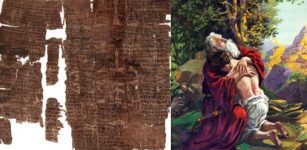 Ancient Egyptian Papyrus Tells A Different Story About Biblical Isaac’s Fate
Archaeology | May 1, 2018
Ancient Egyptian Papyrus Tells A Different Story About Biblical Isaac’s Fate
Archaeology | May 1, 2018 -
 LIDAR Discovers Huge, Sophisticated Ancient Native American Farming System In The Sacred Anaem Omot Area In Michigan
Archaeology | Jun 6, 2025
LIDAR Discovers Huge, Sophisticated Ancient Native American Farming System In The Sacred Anaem Omot Area In Michigan
Archaeology | Jun 6, 2025 -
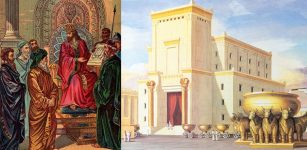 Mystery Of King Solomon’s Temple
Biblical Mysteries | Dec 3, 2018
Mystery Of King Solomon’s Temple
Biblical Mysteries | Dec 3, 2018 -
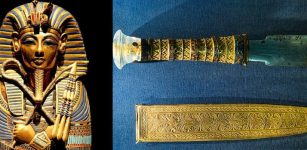 Tutankhamun Had An Ancient Dagger From Outer Space
Archaeology | Jun 1, 2016
Tutankhamun Had An Ancient Dagger From Outer Space
Archaeology | Jun 1, 2016 -
 Marriage And Divorce In Ancient Egypt Were Different But Uncomplicated
Ancient History Facts | Dec 12, 2018
Marriage And Divorce In Ancient Egypt Were Different But Uncomplicated
Ancient History Facts | Dec 12, 2018 -
 Mystery Of The 80 Million-Year-Old Sharks’ Teeth In The City Of David
Archaeology | Jul 4, 2021
Mystery Of The 80 Million-Year-Old Sharks’ Teeth In The City Of David
Archaeology | Jul 4, 2021 -
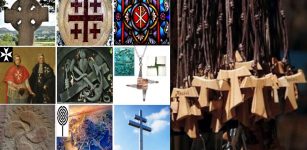 10 Types Of Ancient Crosses In Different Cultures Explained
Featured Stories | May 23, 2017
10 Types Of Ancient Crosses In Different Cultures Explained
Featured Stories | May 23, 2017 -
 Secrets Of Mona’s Caves: Rock Art Reveals Ancient People Were Ahead Of Their Time Long Before The Arrival Of Columbus
Archaeology | Nov 4, 2017
Secrets Of Mona’s Caves: Rock Art Reveals Ancient People Were Ahead Of Their Time Long Before The Arrival Of Columbus
Archaeology | Nov 4, 2017 -
 Mysterious Ancient Circular Structure Discovered In Turkey – Has Zippalanda, The Lost City Of The Hittites Been Found?
Archaeology | Dec 27, 2022
Mysterious Ancient Circular Structure Discovered In Turkey – Has Zippalanda, The Lost City Of The Hittites Been Found?
Archaeology | Dec 27, 2022 -
 How Was The Mysterious Menga Dolmen Built By Neolithic People? New Scientific Theory Presented
Archaeology | Aug 28, 2024
How Was The Mysterious Menga Dolmen Built By Neolithic People? New Scientific Theory Presented
Archaeology | Aug 28, 2024 -
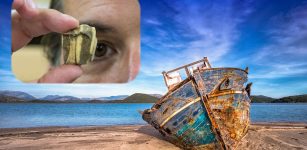 Oldest DNA From Domesticated American Horse Solves An Legendary Shipwreck Mystery
Archaeology | Jul 27, 2022
Oldest DNA From Domesticated American Horse Solves An Legendary Shipwreck Mystery
Archaeology | Jul 27, 2022 -
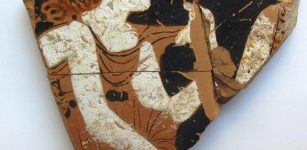 2,700-Year-Old Ancient City Of Limnai On Turkey’s West Coast – Discovered
Archaeology | Nov 22, 2018
2,700-Year-Old Ancient City Of Limnai On Turkey’s West Coast – Discovered
Archaeology | Nov 22, 2018 -
 1.8-Million-Year-Old Human Tooth Found In Georgia Offers More Information On Prehistoric Human Migrations
Archaeology | Sep 15, 2022
1.8-Million-Year-Old Human Tooth Found In Georgia Offers More Information On Prehistoric Human Migrations
Archaeology | Sep 15, 2022 -
 First Genetic Map Of People Of Ireland Is Presented By Irish, British And American Researchers
Archaeology | Dec 15, 2017
First Genetic Map Of People Of Ireland Is Presented By Irish, British And American Researchers
Archaeology | Dec 15, 2017 -
 Unsolved Mystery Of The Anomalous Underwater Structures Discovered In Minnesota
Ancient Mysteries | Sep 24, 2025
Unsolved Mystery Of The Anomalous Underwater Structures Discovered In Minnesota
Ancient Mysteries | Sep 24, 2025 -
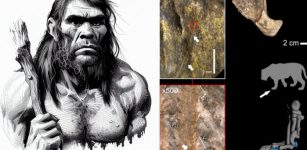 Neanderthals Hunted Dangerous Cave Lions In Eurasia – New Study Shows
Archaeology | Oct 12, 2023
Neanderthals Hunted Dangerous Cave Lions In Eurasia – New Study Shows
Archaeology | Oct 12, 2023 -
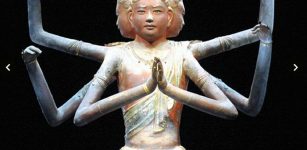 CT Scan Reveals Repairs And Damage Of 1,300-Year-Old Three-Headed And Six-Armed Statue
Archaeology | Feb 23, 2017
CT Scan Reveals Repairs And Damage Of 1,300-Year-Old Three-Headed And Six-Armed Statue
Archaeology | Feb 23, 2017 -
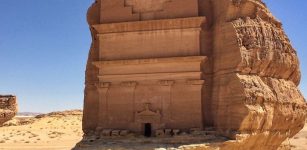 Mada’in Saleh: Magnificent Timeless Rock-Cut Tombs And Monuments In The Desert
Civilizations | Oct 30, 2018
Mada’in Saleh: Magnificent Timeless Rock-Cut Tombs And Monuments In The Desert
Civilizations | Oct 30, 2018 -
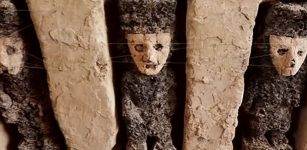 Wooden Pre-Columbian Human-Like Statues Discovered At Chan Chan Complex In Peru
Archaeology | Oct 25, 2018
Wooden Pre-Columbian Human-Like Statues Discovered At Chan Chan Complex In Peru
Archaeology | Oct 25, 2018 -
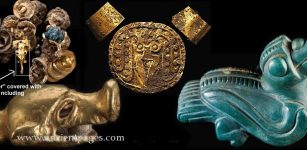 Mysterious Golden Lords Of Panama
Artifacts | Aug 23, 2018
Mysterious Golden Lords Of Panama
Artifacts | Aug 23, 2018

